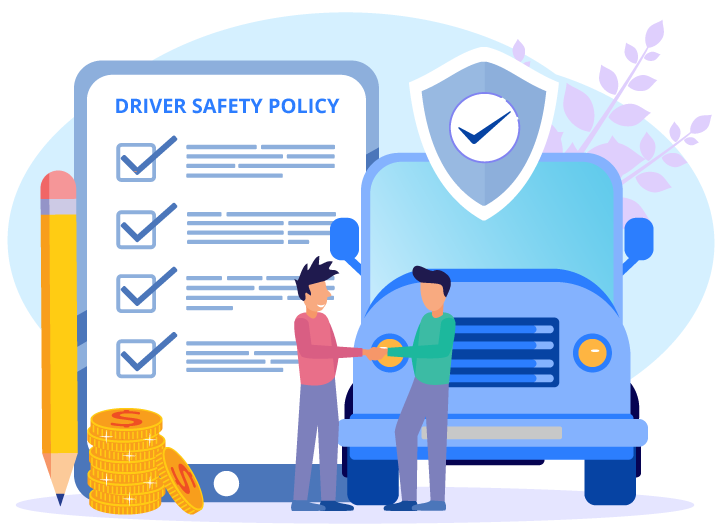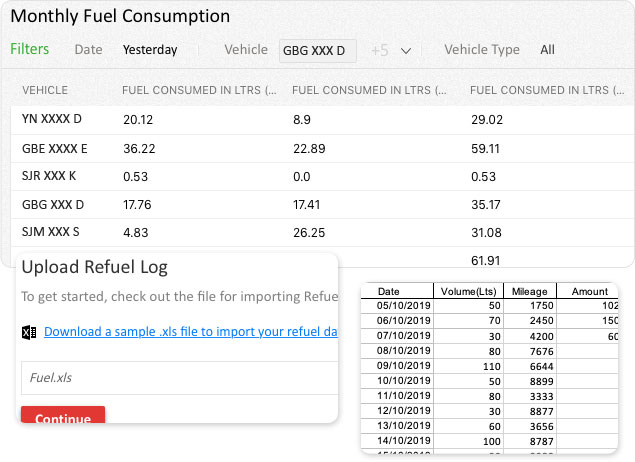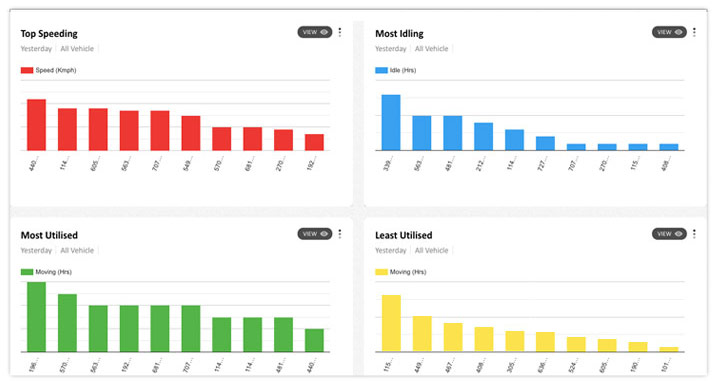It was a scorching summer afternoon when Peter, the manager of a logistics company, received an urgent call.

One of his delivery trucks was involved in a major accident, delaying a shipment and escalating costs.
As Peter investigated further, he discovered the root cause: reckless driving by a regular driver, who had been repeatedly warned about bad driving behaviour.
This incident was a wake-up call for Peter. He realised that monitoring driving behaviour was not just about timely deliveries or optimised routes – it was about safety, cost-efficiency, and building a culture of accountability.
This story resonates with many managers like Peter, emphasising the need for an advanced driver behaviour monitoring system.
What is driving behaviour monitoring?
Driving behaviour monitoring is a method or technology used to gather and analyse data on how a driver acts while operating a vehicle.
The driving behaviour monitoring process includes tracking various aspects such as overspeeding, sudden braking and acceleration, and cornering of a vehicle.
Trying to understand or monitor these aspects, you will be able to identify driving behaviours, implement safety measures, and lastly reward your driver for good driving habits.
Why is it important?
The importance of driving behaviour monitoring cannot be underestimated.
In fleet operations, challenges such as road accidents and high fuel consumption can result in unexpected expenses.
Using an advanced driver monitoring system, you can:
- 1. Enhance safety: Risky driving habits, such as harsh braking or sudden acceleration, increase the chances of accidents. Monitoring these behaviours helps enhance safer driving.
- 2. Reduce costs: Unsafe driving often leads to higher fuel consumption and vehicle wear and tear. Identifying and addressing these habits can lead to significant cost reduction.

- 3. Enforce driver safety policies: Most of the industries are governed by strict safety pollicies. Driver monitoring ensures compliance with these standards, avoiding penalties and legal issues.
What do driving behaviour telematics measure?
Driving behaviour telematics systems measure a range of parameters, offering a comprehensive view of driving habits.
Some of the most commonly tracked metrics include:
- 1. Overspeeding: Instances of excessive speed limits or driving too fast for road conditions.
- 2. Harsh braking: Sudden or harsh braking, which indicates poor anticipation or potential safety risks.
- 3. Rapid acceleration: Frequent acceleration patterns that may lead to increased fuel consumption and vehicle stress.
- 4. Cornering: The force and smoothness with which a vehicle navigates curves or turns.
- 5. Idling time: Prolonged engine idling, which wastes fuel and results in unnecessary emissions.
- 7. Seat belt usage: Compliance with seat belt regulations, a critical safety metric.
- 8. Distraction levels: Advanced systems use cameras and AI to detect distracted driving, such as mobile phone use.
Metrics to track in driving behaviour monitoring
Once the driving behaviours mentioned above are measured, an advanced fleet management system will generate various metrics.
Mentioned below are the key metrics that can be aligned with specific operational goals:
- 1. Driver scorecard: A cumulative score that rates drivers based on their overall performance, enabling easy identification of top and bottom performers.
- 2. Fuel efficiency: Tracking fuel consumption patterns to optimise operational costs.
- 3. Incident reports: Logging near-misses, collisions, or other incidents to assess and mitigate risks.
- 4. Compliance records: Ensuring adherence to driving hours, seat belt usage, and other regulatory requirements.
- 1. Data collection: GPS trackers, accelerometers, and onboard diagnostics (OBD) devices capture driving behaviour and vehicle performance data.
- 2. Data transmission: This data is transmitted in real time to a centralised platform via cellular or satellite networks.
- 3. Data analysis: After identifying patterns, anomalies, and areas for improvement, advanced analytical tools process the data.
- 4. Reporting and alerts: Based on the processed data, dashboards provide visualised reports, while instant alerts notify you of unsafe driving behaviours.
- 5. Driver feedback: Based on the insights gathered, drivers receive real-time feedback or periodic training for improvement.
- 1. Define clear objectives: Why you need to implement this, whether it’s to improve safety, reduce costs, or enhance compliance.
- 2. Choose the right technology: Choose a fleet management platform like AVLView that is scalable and helps to improve your operational efficiency.
- 3. Engage drivers: Educate drivers about the system’s purpose and benefits.
- 4. Set benchmarks: Establish performance benchmarks and regularly track progress.
- 5. Provide feedback: Use monitoring data to provide constructive feedback and recognise good performance.
- 6. Review and adapt: Continuously review system performance and make necessary adjustments to address emerging challenges.
How does driver monitoring work?
Driver monitoring is made possible by integrating telematics devices, sensors, and software to collect and analyse data.
Here’s how it works:

Best practices for implementing a driving behaviour monitoring system

Start monitoring driving behaviour today
If you believe that driving behaviour monitoring in fleet management is a necessity rather than a luxury, you are on the right track.
Take the first step towards transforming your fleet operations today.
Explore cutting-edge driving behaviour monitoring solutions that suit your business needs and pave the way for a safer, more efficient future.
Act now to stay ahead in an increasingly competitive landscape.

